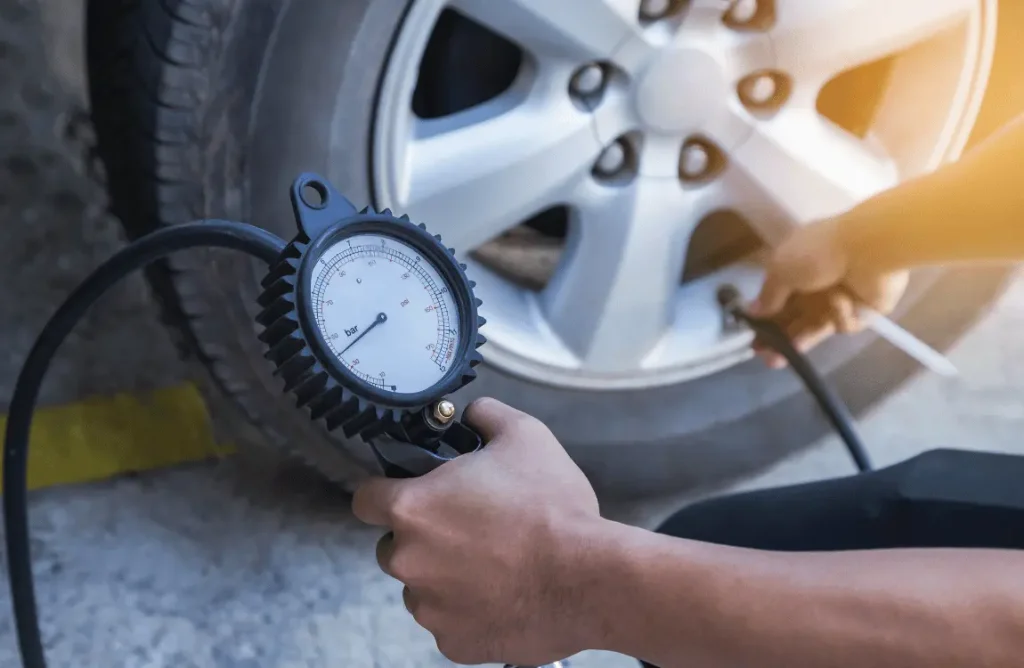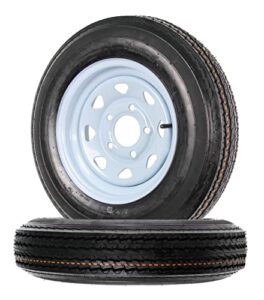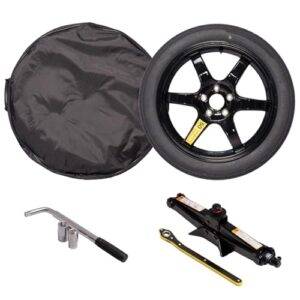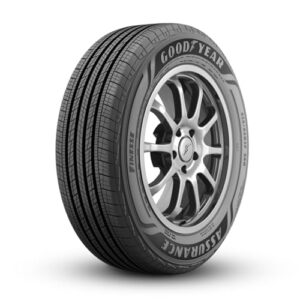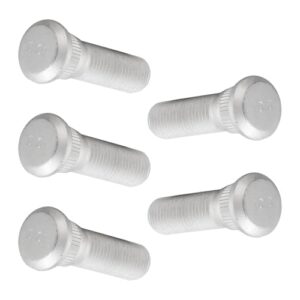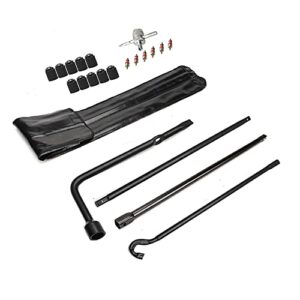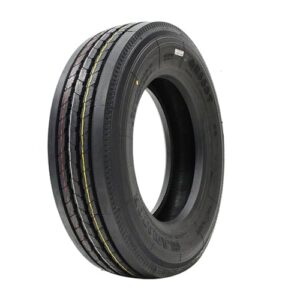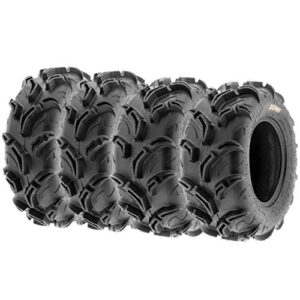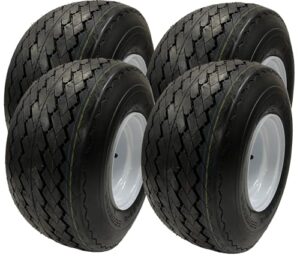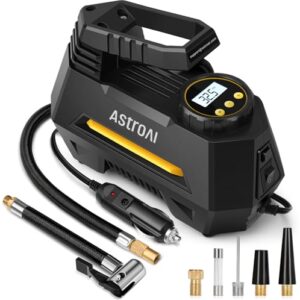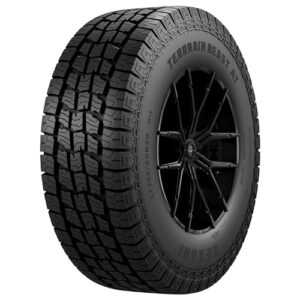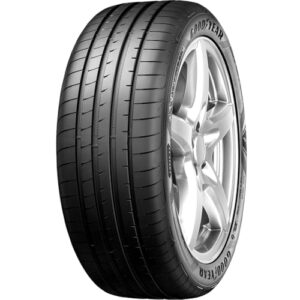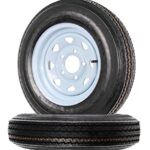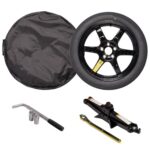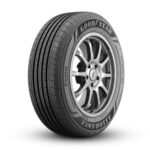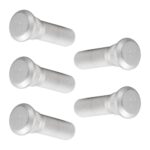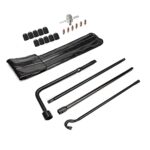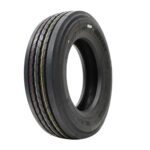To read a tire gauge, press it onto the valve stem and note the reading. Ensure the gauge is firmly seated for an accurate measurement.
Checking your tire pressure is crucial for maintaining your vehicle’s performance, safety, and fuel efficiency. A properly inflated tire can prevent accidents and help your tires last longer. Using a tire gauge allows you to monitor tire pressure, ensuring it matches the recommended levels provided by your vehicle’s manufacturer.
Regular tire pressure checks should be part of your vehicle maintenance routine, ideally performed monthly and before long trips. Keeping a tire gauge in your vehicle ensures you’re always ready to check your tires, thereby optimizing your driving experience and contributing to safer roadways. It’s a simple yet effective tool that benefits drivers significantly through regular use.
Importance Of Tire Pressure
Understanding the importance of tire pressure is essential for any driver. It’s not merely about maintenance; it’s a matter of performance, safety, and cost efficiency. Maintaining the correct tire pressure ensures that the vehicle’s weight is evenly distributed across the tire tread, which is crucial for optimal driving conditions. Let’s explore the various reasons why keeping an eye on tire gauges and pressure is vital for your vehicle’s health and your own safety.
Understand Vehicle Performance And Safety
Vehicle performance and safety are directly tied to tire pressure. A tire inflated to the manufacturer’s recommended PSI (pounds per square inch) can handle the stresses of acceleration, braking, and cornering much better than underinflated or overinflated tires. Underinflated tires can overheat, leading to premature wear and even tire failure, while overinflated tires can result in less traction and a more jarring ride. Regularly checking your tires with a reliable tire gauge can help prevent these issues, ensuring a smoother and safer ride.
Savings On Fuel And Tire Longevity
- Fuel efficiency improves when tires are properly inflated, reducing rolling resistance. This means your vehicle doesn’t have to work as hard or use as much fuel to move forward, leading to cost savings at the pump.
- Another aspect of tire maintenance is the longevity of your tires. Correct tire pressure prevents irregular tire wear patterns so that the tire wears evenly. This extends the life of the tire, saving money on early replacements.
Tire Pressure Basics And Recommended Psi
Knowing the basics of tire pressure and the recommended PSI for your vehicle is the foundation for proper tire maintenance. The recommended PSI is typically listed in your vehicle’s owner’s manual and on a placard inside the driver’s door. PSI can vary depending on the tire and vehicle type, and it’s important to follow these guidelines:
| Condition | Recommended Action |
|---|---|
| Cold Tires | Check and fill up to the recommended PSI. |
| Hot Tires | Wait for the tires to cool before checking the pressure. |
| Seasonal Changes | Adjust the PSI accordingly, as temperature affects pressure. |
Make sure to check your tire pressure at least once a month and before any long trips. Use a quality tire gauge for accurate readings and if you’re unsure about how to do it properly, consult a professional. Always remember, that maintaining the right tire pressure is a quick and easy way to enhance your vehicle’s performance, safety, and economy.

Tire Gauge Types Explained
Understanding the variety of tire gauges available can transform the way you maintain your vehicle. Each type offers distinct advantages and user experiences. Dive into the world of tire gauge types, where we explore how they function and vary, ensuring you know precisely how to maintain optimal tire pressure for a safer, more efficient drive.
Analog Vs. Digital Tire Gauges
Maintaining proper tire pressure is crucial, and selecting the right tool can make all the difference. Analog tire gauges, known for their simplicity, feature a mechanical dial that points to the pressure reading. These devices are typically robust and do not require batteries, making them a favorite for many who appreciate traditional tools.
On the flip side, digital tire gauges offer a modern approach with an easy-to-read digital display. The precise readings and backlit screens make them ideal for use in low-light conditions. They are compact, and sometimes feature additional functionalities like a light or a tread depth gauge, but do require battery power to operate.
Benefits Of Accurate Tire Pressure Readings
Achieving accurate tire pressure readings is central to vehicle maintenance and performance. Properly inflated tires ensure:
- Better fuel efficiency: Adequately filled tires reduce rolling resistance, thereby using less fuel.
- Extended tire life: Correct inflation reduces the likelihood of tire wear and tear, leading to longer-lasting tires.
- Improved safety: Optimal tire pressure provides better traction and handling, reducing the risk of accidents.
- Enhanced comfort: A smooth ride arises from tires pumped to the precise pressure recommended by the vehicle manufacturer.
How Different Gauges Suit Various Needs
Choosing the right tire gauge can be as personal as selecting a car. What suits one person might not meet the needs of another.
| Type of Gauge | Best Suited For |
|---|---|
| Analog | Those who prefer a mechanical device and do not mind interpreting the dial. Great for garages and older cars. |
| Digital | Users who want quick, accurate readings without the guesswork. Suitable for modern vehicles and tech-savvy individuals. |
For daily drivers, a basic digital gauge might be the most convenient option. Car enthusiasts or professionals might lean towards analog gauges for their reliability and no-nonsense approach. Meanwhile, motorists in regions with drastic temperature shifts could benefit most from the precision of digital gauges.
Using Your Tire Gauge Properly
Maintaining the correct tire pressure is vital for your vehicle’s fuel efficiency, tire lifespan, and safety on the road. Checking tire pressure regularly becomes a crucial part of vehicle maintenance. Using your tire gauge properly will ensure you get accurate readings and can take action when needed.
Step-by-step Process Of Checking Tire Pressure
- Find the recommended tire pressure for your vehicle in the owner’s manual or on a sticker inside the driver’s door.
- Remove the cap from the tire’s valve stem.
- Press the tire gauge onto the valve stem firmly. If you hear a hissing sound, adjust the gauge until it stops.
- Read the pressure on the gauge. Dial gauges or digital gauges will show a number; a standard gauge will have a rod that pops out to indicate pressure.
- Compare the reading to the recommended pressure. If necessary, inflate your tire or release air to achieve the correct pressure.
- Replace the valve cap to prevent dirt from entering and to maintain the proper seal.
Tips For Getting A Consistent Reading
- Check tire pressure when the tires are cold, preferably after the car has been parked for a few hours or before it’s been driven more than a mile.
- Use the same tire gauge each time for consistency.
- Take multiple readings and use the average as the most accurate measurement.
- Make sure the gauge is calibrated correctly; if you’re unsure, compare it with another gauge.
Common Mistakes To Avoid During Pressure Checks
- Not checking regularly: Tire pressure can change with temperature changes and over time, so check it at least once a month and before long trips.
- Overinflating: Filling your tires with too much air can cause uneven wear and a rough ride.
- Underinflating: Too little air leads to increased friction, tire wear, and possibly tire failure.
- Ignoring the spare: Don’t forget to check the pressure of your spare tire as well.
- Relying on visual inspections: Tires may appear fine even when underinflated, so always use a gauge for accuracy.
- Improper gauge handling: Pushing or twisting the gauge too hard on the valve stem can give false readings or damage the valve.
How To Read A Tire Gauge Correctly
Ensuring your tires are at the correct pressure is crucial for both vehicle performance and road safety. Incorrect tire pressure can lead to a slew of issues, including decreased fuel efficiency, poor handling, and even tire blowouts. Reading a tire gauge correctly is a simple yet essential skill for any car owner, and this involves understanding both analog and digital devices. Let’s break down the steps to accurately interpret your tire’s pressure readings.
Interpreting Analog Gauge Measurements
Analog tire gauges, often resembling a small rod with a sliding scale, are reliable tools for measuring tire pressure. To read an analog gauge:
- Insert the gauge onto the valve stem of your tire. Ensure it’s seated well to avoid air escaping.
- Press down firmly to get a reading. The gauge’s inner rod will pop out, showing a number that corresponds to your tire’s pressure in PSI (pounds per square inch).
- Read the number on the rod that’s most visible. Most analog gauges measure in 2-PSI increments.
Although reading analog gauges is straightforward, ensure the gauge is correctly calibrated and in good condition for an accurate measurement. Normal pressure levels usually range from 30 to 35 PSI, depending on your vehicle’s recommendation.
Navigating Digital Gauge Readouts
Digital tire gauges offer an easier readout and are becoming increasingly popular for their precision. To use a digital tire gauge:
- Turn on the gauge if it has a power button. Some switch on automatically once placed on the valve stem.
- Similar to an analog gauge, place the digital gauge on the tire’s valve stem and press firmly.
- Wait a moment for the gauge to display a digital reading of the pressure.
- Note the tire pressure, displayed in PSI, which remains on the screen for easy recording.
With digital gauges, it’s important to replace batteries regularly to avoid incorrect readings. Readouts will typically be in increments of 0.5 PSI or less for improved accuracy.
What To Do After Recording Your Tire Pressure
After you’ve recorded the pressure using either an analog or digital tire gauge, the next steps are vital for tire maintenance:
- Compare the reading to the recommended tire pressure in your vehicle’s manual or on the sticker inside the driver’s door.
- If the pressure is below the recommendation, add air to your tire, checking frequently until you reach the correct pressure.
- If the pressure is above the recommendation, let air out of the tire, again checking the level often, until you hit the target PSI.
- Remember to check your spare tire as well; it is often neglected but equally important in case of an emergency.
- Recheck the tire pressure monthly or before a long trip. Temperature changes can affect tire pressure over time.
Maintaining the proper tire pressure is not just a one-time task but an ongoing responsibility for safer, more efficient driving. With these steps, you’re well-equipped to keep your tires in top shape.
After The Pressure Check
Checking your tire pressure is only part of the process – what comes after the pressure check is essential to ensure your vehicle runs safely and efficiently. Once you’ve measured the tire pressure using a gauge, the next steps are to adjust the pressure, understand when to add or release air, and maintain your tire gauge for future accuracy. Let’s break down each of these components:
Adjusting Tire Pressure Accurately
Maintaining the correct tire pressure is crucial for safety and performance. To adjust tire pressure accurately, follow these guidelines:
- Check the manufacturer’s recommended tire pressure for your vehicle, typically found in the owner’s manual or on a sticker inside the driver’s side door.
- Use a reliable tire gauge and compare the reading to the recommended pressure.
- If the pressure is too high, gently press the gauge to release air until the desired level is reached.
- If the pressure is too low, add air using an air compressor, available at most gas stations or with a home air pump, and recheck with the gauge.
How To Know When To Add Or Release Air
Deciding when to add or release air from your tires might seem complex, but it boils down to these key points:
- Add air when the tire pressure is below the recommended level. This can affect fuel efficiency and handling.
- Release air if tire pressure is above the recommended level to prevent excess wear and reduce the risk of tire blowouts.
- Adjust the pressure when tires are ‘cold,’ as driving heats up tires and increases pressure.
- Always recheck the pressure after driving a short distance to ensure accuracy.
Maintaining Your Tire Gauge For Accuracy
To maintain your tire gauge and ensure it provides accurate readings, consider these tips:
- Store the gauge in a protective case, away from dirt and moisture.
- Avoid dropping the gauge, as the impact can damage its internal components and affect accuracy.
- Periodically check the gauge against another one to verify readings. If discrepancies are found, it may be time to replace the gauge.
- Consider a digital gauge for ease of reading and potentially more reliable measurements.
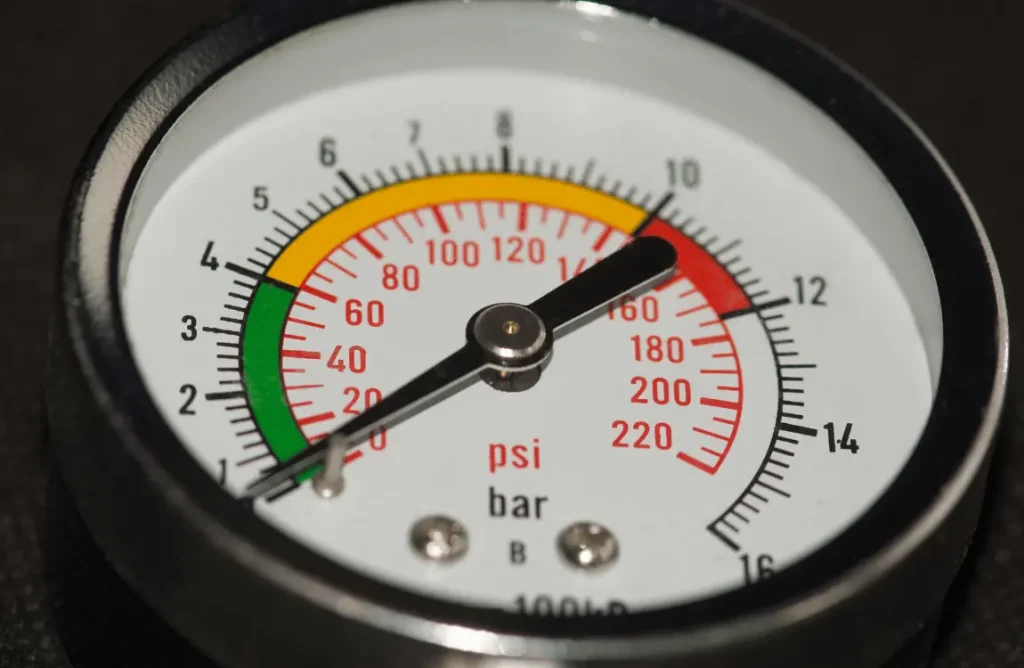
Frequently Asked Questions
What Is A Tire Gauge Used For?
A tire gauge measures the air pressure in your vehicle’s tires, ensuring they are inflated to the manufacturer’s recommended levels for safe driving and optimal performance.
How Do I Read A Tire Pressure Gauge?
To read a tire pressure gauge, press it onto the valve stem, note the reading, and compare it to your tire’s recommended pressure, often found in the car’s manual or doorjamb.
Why Is Tire Pressure Important For Safety?
Proper tire pressure maintains optimal contact with the road, improving handling, reducing tire wear, and preventing accidents caused by underinflated or overinflated tires.
Conclusion
Mastering the use of a tire gauge ensures optimal vehicle performance and safety. By keeping tire pressure at manufacturer recommendations, you can save on fuel and avoid premature wear. Don’t overlook this simple tool; it’s essential for maintaining your tires and ensuring a smooth ride.
Stay safe and efficient on the road – check your tire pressure regularly!


